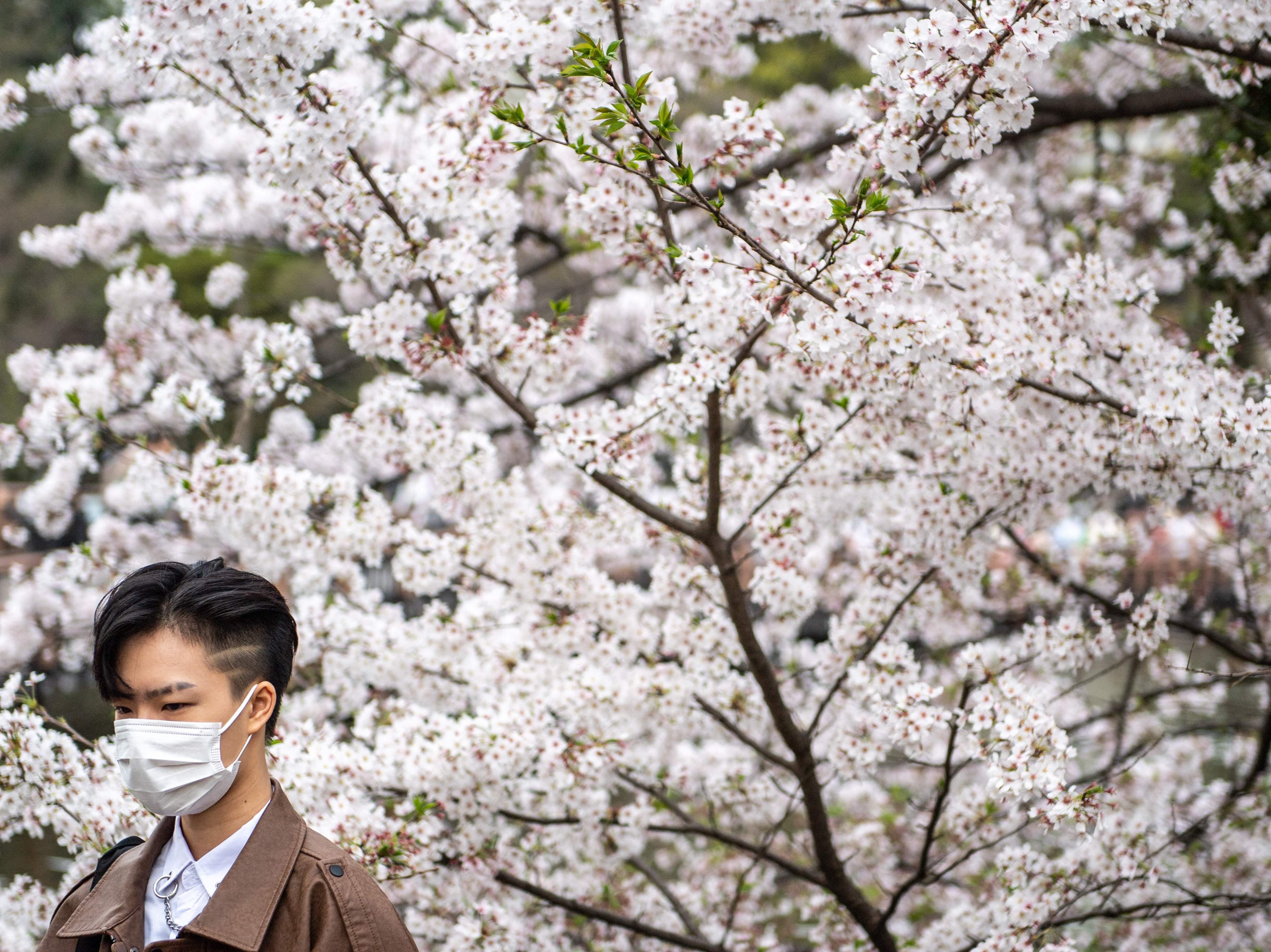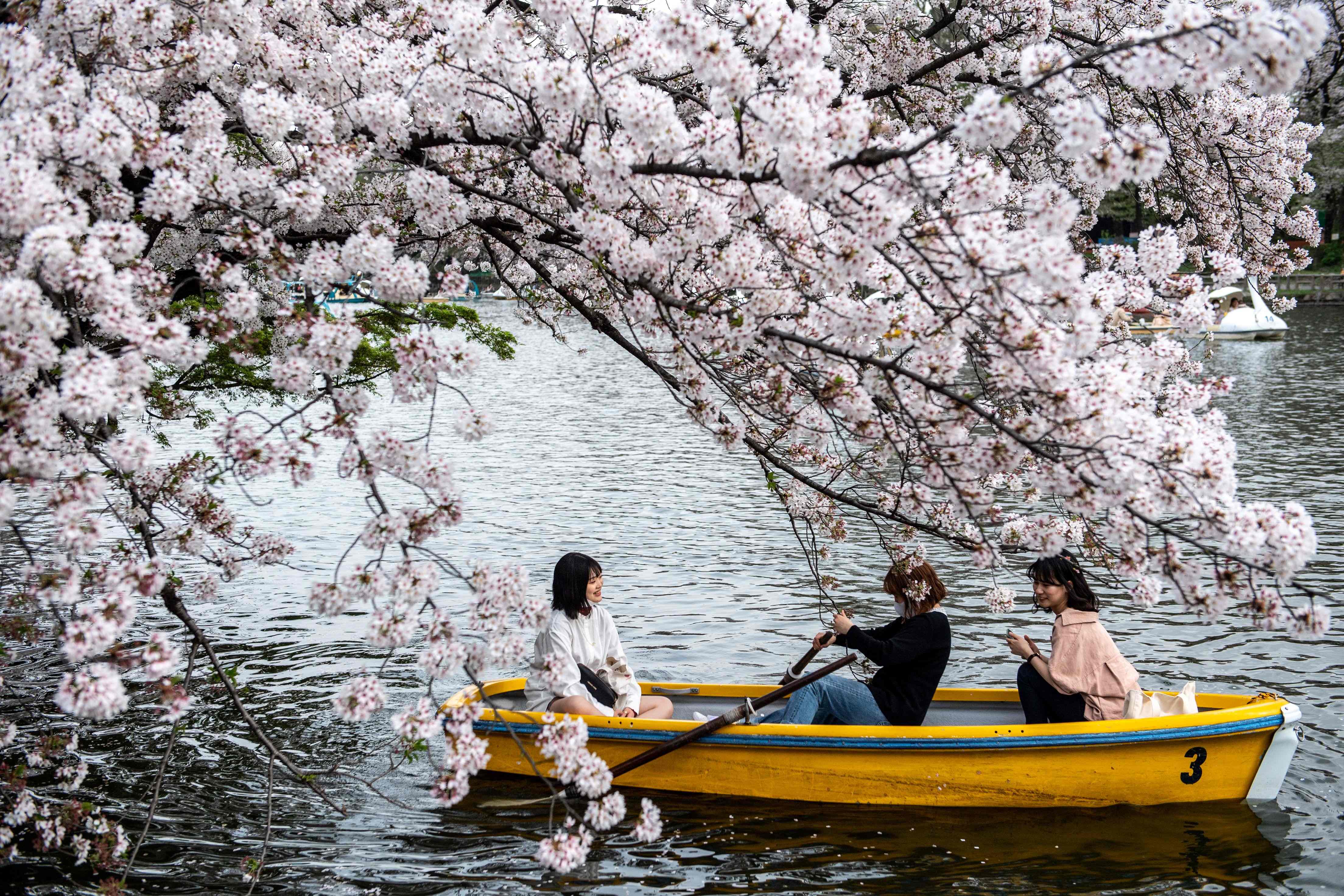Climate change sees Japan’s cherry blossoms peak on earliest date in 1,200 years
Shift toward earlier blooms has been most rapid in the last 100 to 150 years, during which the average temperature has risen by about 3C

During an exceptionally warm March in Japan, the cherry blossoms in Kyoto peaked Friday, the earliest in more than 1,200 years of records. The bloom fits into a long-term pattern toward earlier spring flowering, a compelling indicator of climate change, experts say.
The 26 March 2021 peak bloom date surpassed the previous record holder of 27 March, 1409, nearly a century before Christopher Columbus sailed to America. The long-term record dates back to 812 AD, not longer after Charlemagne was crowned Holy Roman Emperor.
“The Kyoto Cherry Blossom record is incredibly valuable for climate change research because of its length and the strong sensitivity of flowering to springtime temperatures (warmer springs equal earlier flowering, typically),” said Benjamin Cook, a research scientist at Columbia University who specializes in reconstructing climate data from the past.
Unique for its longevity, the cherry blossom records show that the average peak bloom date was relatively stable for about 1,000 years, from about 812 to 1800. But then, the peak bloom dates slope abruptly downward, revealing a shift earlier and earlier in the spring.
“Since the 1800s, warming has led to a steady trend toward earlier flowering that continues to the present day,” Mr Cook said. “Some of this warming is due to climate change, but some is also likely from an enhanced heat island effect due to increased urbanisation of the environment over the last couple of centuries.”
Read more:
The data is a treasure, having been maintained by emperors, aristocrats, governors and monks over the centuries. Most recently, Yasuyuki Aono, a scientist at Osaka Prefecture University, has tracked the blossoms and posted the data online.
Cherry blossoms have burst unusually early all over Japan this spring. In Tokyo, they reached full bloom 22 March, their second-earliest date and earliest since 1953, according to the Japan Forward. It marked the ninth consecutive earlier-than-normal bloom, the Forward reported, after nearly a week during which high temperatures climbed to at least 68F (20C). The average full bloom date is 25 March.

In Kyoto, the shift toward earlier blooms has been most rapid in the last 100 to 150 years. In 1850, the average flowering date was about 17 April; now, it’s closer to 5 April. During this time, the average temperature in Kyoto has risen by about 6F (3.4C).
The shape of the trend line through the blossom flowering dates resembles a hockey stick - with a flat handle but sharply sloping blade. Studies documenting temperature changes over the past 1,000 to 2,000 years have taken on a similar shape, reflecting a relatively stable climate through the mid-1800s, and a quickly warming one since.

“Evidence, like the timing of cherry blossoms, is one of the historical ‘proxy’ measurements that scientists look at to reconstruct past climate,” said Michael Mann, a professor of climate scientist at Pennsylvania State University who has published numerous studies on temperature changes through recent millennia. “In this case, that ‘proxy’ is telling us something that quantitative, rigorous long-term climate reconstructions have already told us - that the human-caused warming of the planet we’re witnessing today is unprecedented going back millennia.”
The trends toward earlier blooms in Japan have also been observed in the cherry trees at the Tidal Basin in Washington gifted by Japan in 1912. Since 1921, the National Park Service has kept a record of their peak flowering dates.
In the century of records, the average peak bloom date of the Yoshino cherry trees in Washington has advanced six to seven days, from about 5 April to 31 March.
In 2021, the blossoms in Washington peaked on Sunday, several days ahead of the recent 30-year average. In 2020, they peaked 20 March, tied for the third earliest on record.
The Washington Post
Join our commenting forum
Join thought-provoking conversations, follow other Independent readers and see their replies
Comments
Bookmark popover
Removed from bookmarks